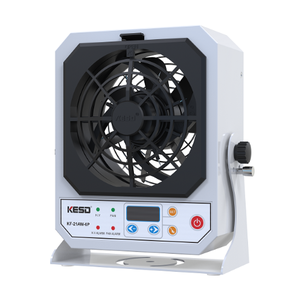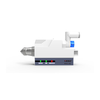The Function and Principle of KESD Ionizing fans
Featured Product from Shenzhen KESD Technology Co., Ltd.

Introduction of KESD Ionizing Fans:
What is the function and principle of an ionizing fan?
An ionizing fan, also known as an ionizer, operates by utilizing high voltage to ionize the surrounding air, generating a substantial amount of positive and negative charges. These charges are then propelled outward by the fan, creating a flow of positive and negative ions. As its name suggests, the ion fan emits a stream of positive and negative ion wind, effectively neutralizing surface charges on objects and eliminating static electricity.
What is the purpose of an ionizing blower?
The primary function of an ionizing fan is to eliminate static electricity, offering outstanding antistatic performance to prevent static-related pollution and damage. It serves as an essential equipment in industrial settings, particularly on electronic production lines and maintenance desks, providing a crucial layer of electrostatic protection.
KESD offers a range of ionizing blowers tailored for localized use, such as the KESD Small Ionizing Blower KF-06WR and Ionizing Blower KF-21F. These units are characterized by their compact size, lightweight construction, and easy installation, making them suitable for diverse environments.
KESD ionizers are typically categorized into desktop, horizontal, suspended, and miniature variants, each serving specific application needs.
By familiarizing yourself with KESD ionizing blowers, you gain insight into their operational principles and functionalities.
The ionizing blower comprises three key components: the corona discharge motor, high-voltage power supply, and air delivery system, with the corona discharge motor being the central element. Its operational principle hinges on tip discharge phenomena and the neutralization of positive and negative charges. Boosting methods vary, including high-frequency piezoelectric oscillation, primary and secondary coil transformation, and positive and negative electrode group boosting. These methods give rise to three distinct types of ion fans: ordinary AC, high-frequency AC, and DC fans. Additionally, ionizing fans come in various configurations, such as desktop, horizontal, suspended, and miniature models, catering to diverse specifications and requirements.





